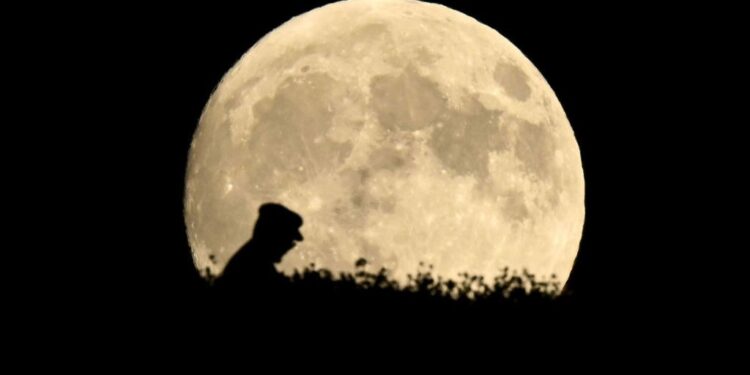On Tuesday evening, stargazers in North America, South America, Europe, and Africa will be treated to three celestial events taking place at the same time: the harvest moon, a blood moon, and a supermoon.
All three occurring simultaneously are “quite rare,” Teresa Monsue, an astrophysicist at NASA’s Goddard Space Flight Center, told NPR.
Here’s what to know about the celestial trifecta and how to watch it in the U.S.
Read More: These Are All the Different Types of Eclipses
What is a harvest moon?
The harvest moon appears near the autumn equinox. Its name, according to the almanac, comes from the time when its brightness would help farmers harvest their end-of-season crops. What makes this moment special is that the moon’s orbit and the Earth’s horizon are positioned in such a way that the moon appears to rise above the horizon much faster than usual. When viewed right after sunset, when the moon is closest to the horizon, it creates an optical illusion that makes the harvest moon look bigger than usual. That effect will be further amplified by the fact that Tuesday night’s harvest moon will also coincide with a supermoon.
What is a supermoon?
Supermoons occur when the moon is both full and at its closest to Earth, making the moon appear larger than usual. Supermoons occur between three to four times a year because the moon’s orbit and distance from Earth changes with each new cycle.
What is a blood moon?
During a lunar eclipse, the Earth’s shadow partially blocks the sun’s light from reaching the moon, giving it a reddish appearance often referred to as a blood moon. On Tuesday night, in addition to seeing the characteristics of a harvest and supermoon, stargazers can also expect the moon to have an unusual red color due to a partial lunar eclipse that will be taking place at the same time.
Where and when can I watch the Harvest-Blood-Supermoon?
It’s helpful to watch from a place where skies are clear, which you can find by checking your local weather app. The Midwest, South, and Southern Plains of the U.S. are expected to have relatively clear skies on Tuesday night, according to the Washington Post. West coast cities such as Los Angeles and San Francisco can also expect relatively clear skies. However, on the East Coast, things may be more tricky. Cities such as Boston and Washington, D.C. may have cloudier forecasts, making it more difficult to see the event.
The partial lunar eclipse begins at 8:41 p.m. E.T. and reaches its peak at 10:44 p.m., according to NASA, but viewers may be able to notice part of the moon entering full shadow as early as 10:13 p.m.
When will be the next Harvest-Blood-Supermoon?
The next Harvest-Blood-Supermoon combination will occur in fall 2033, according to the public service radio program EarthDate. While it is a while away, the 2033 moon will be even more rare because it will also include a full lunar eclipse instead of a partial one.
The next full supermoon will be visible on Oct. 17, 2024, and the next lunar eclipse will occur on Mar. 14, 2025, according to NASA.







